In the villages of mainland Papua New Guinea, near the town of Madang on the north coast, a struggle to protect the rainforest is underway. Loggers have clearcut large swathes of the rainforest in this region, destroying a valuable resource that local villages depend on for survival.
“The forest is our livelihood,” says Lawrence Micah, who has lived his entire 50 years in the village of Simbukanam. “It’s our food, it’s our hospital, and everything.”
Now a group of nine communities have reached a collective agreement to better protect their rainforests for the future. Australian photographer Annette Ruzicka, on assignment for a story for Nature Conservancy magazine, traveled from Melbourne to these villages in May 2023 to cover their historic work.
In the photo essay below, Ruzicka shares more about her experiences photographing the story and how the forests have become integral to the lives of these villagers.
Photos from this coverage ran in the Winter 2023 issue of Nature Conservancy magazine with the story “A Tale of Two Forests.” Read that story and others from the issue here: www.nature.org/magazine
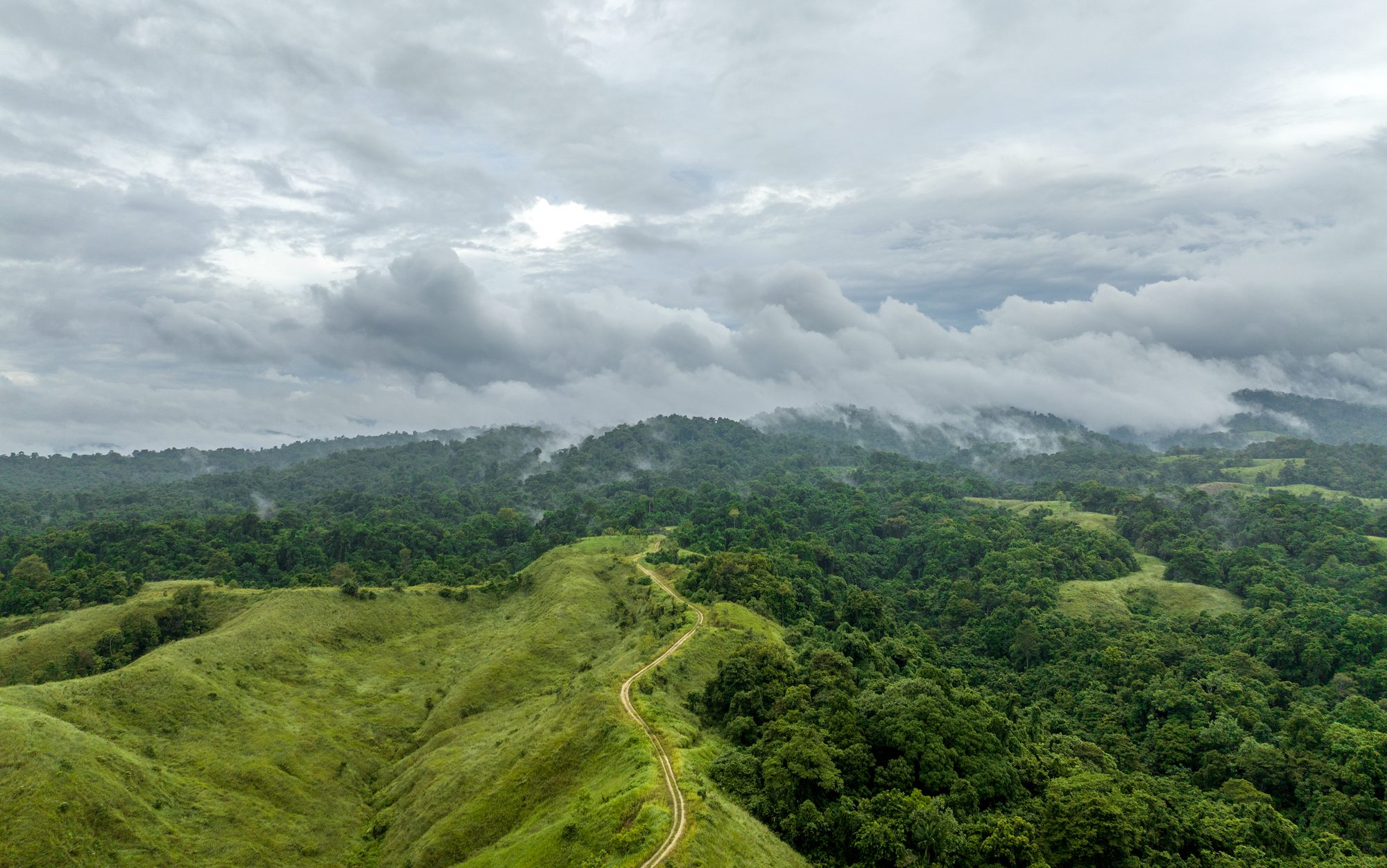
In this image, looking toward Mt. Masur (obscured by cloud cover), a logging road seemingly divides the forest. On the left, bare hillsides stand where a forest once stood. On the right, a secondary rainforest is growing back in. And in the background some patches of virgin rainforest still stand. “That was the only place in our itinerary that still has virgin rainforest—a rare place that hasn’t had the hands of logging all over it,” says Ruzicka.
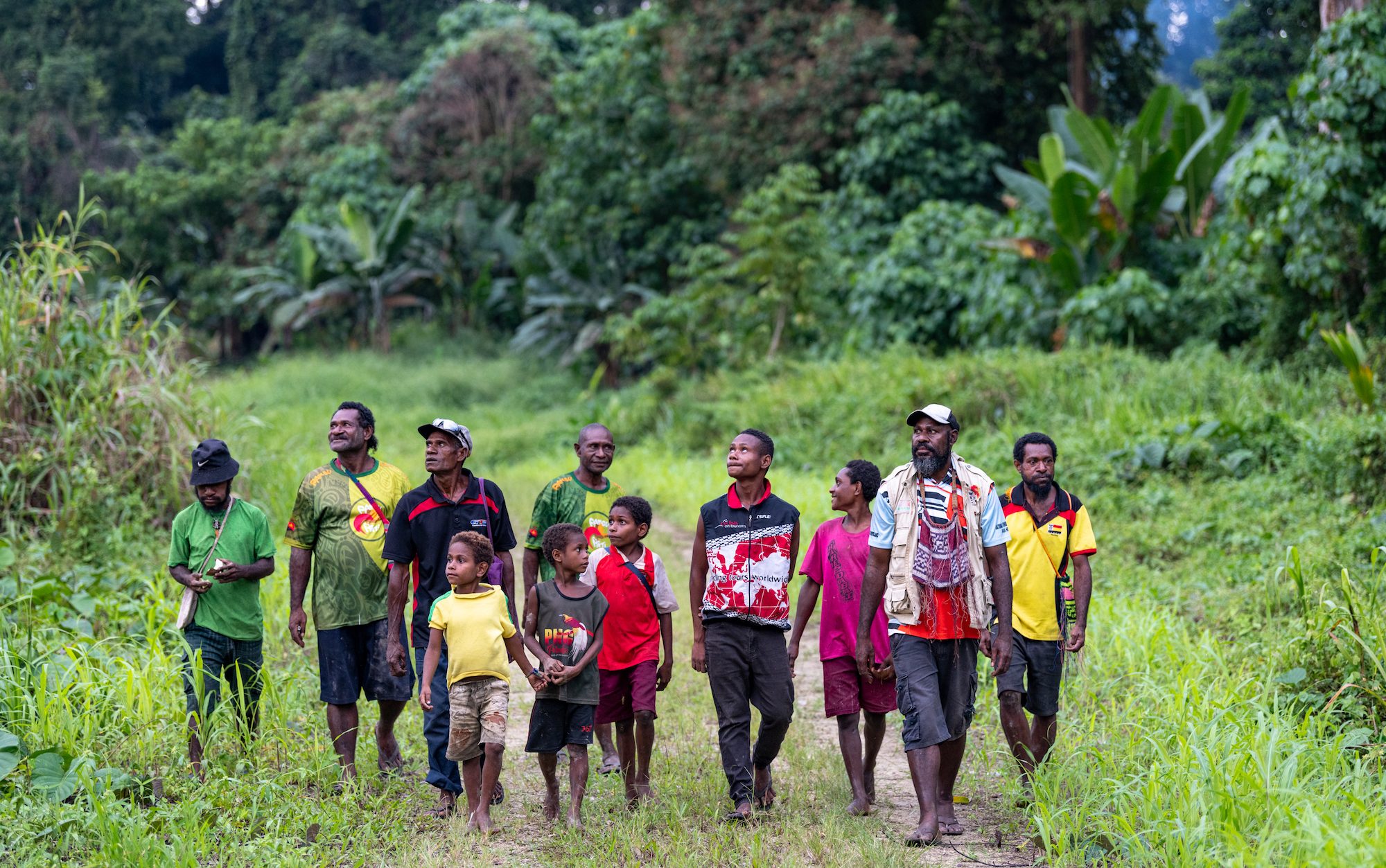
Men and boys took Ruzicka on a tour of what’s left of their forest not long before a regional ceremony occurred in which multiple communities signed an agreement to disallow logging in their forests. By working together, these relatively small communities can amplify their voices when dealing with the government and logging companies. Ruzicka notes that many of the men are wearing traditional bags, called “bilums.” Each is made with colors or patterns that represent their respective villages.
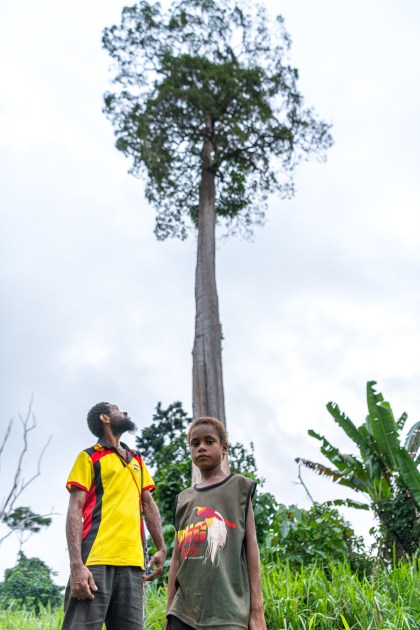
Village resident Adolf and his son Zetnel Kamit brought Ruzicka to see a single old-growth tree that was inexplicably left by loggers near Malas Village. “They want their forest back,” says Ruzicka. “I just found this so sad—just that one last tree. It just helps you picture what it’s supposed to look like.”
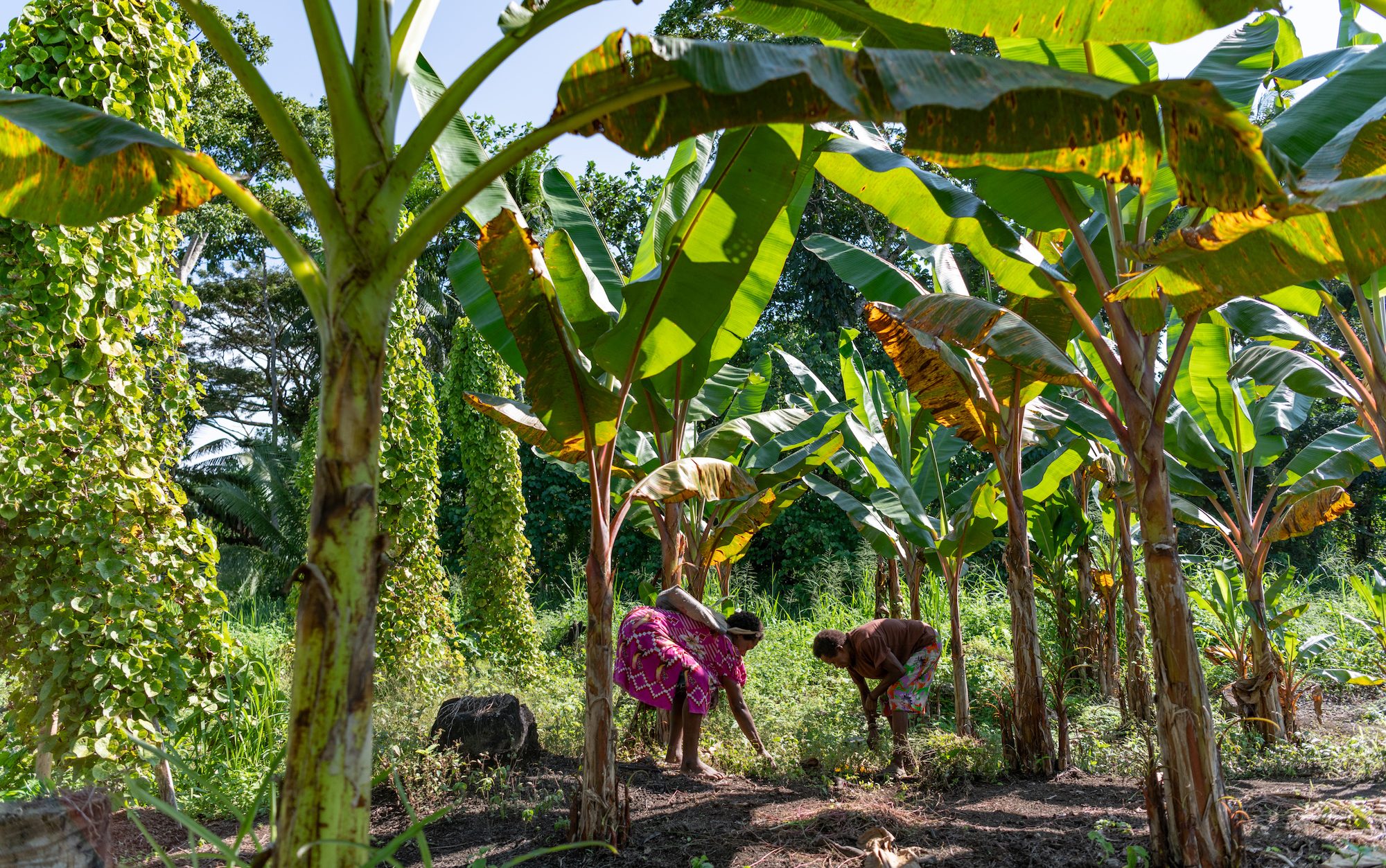
Women pull weeds in one of the communal gardening areas near Kamadi Village. “Some areas that were logged or cleared, they transform them into these garden zones,” says Ruzicka. “So there’s loads of things. They grow bananas and cocoa and yams and betel nut as well.” The harvests in these communal gardens both feed the village and are sold at roadside markets.
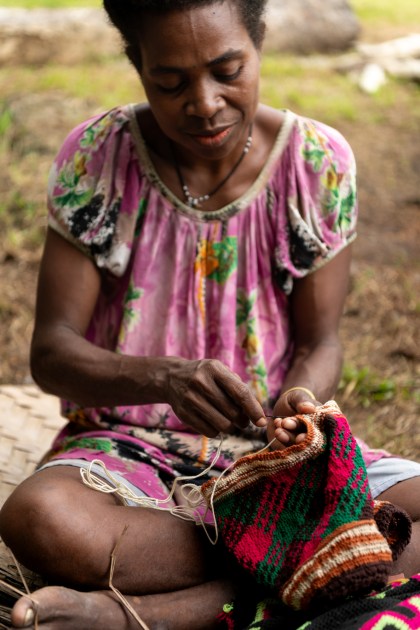
Fiona Marat of Murukanam Village making a bilum. Ruzicka was fascinated by these traditional bags. She says they are labor intensive; it can take a few months to weave just one. They are made in a variety of sizes and can be made to carry babies.
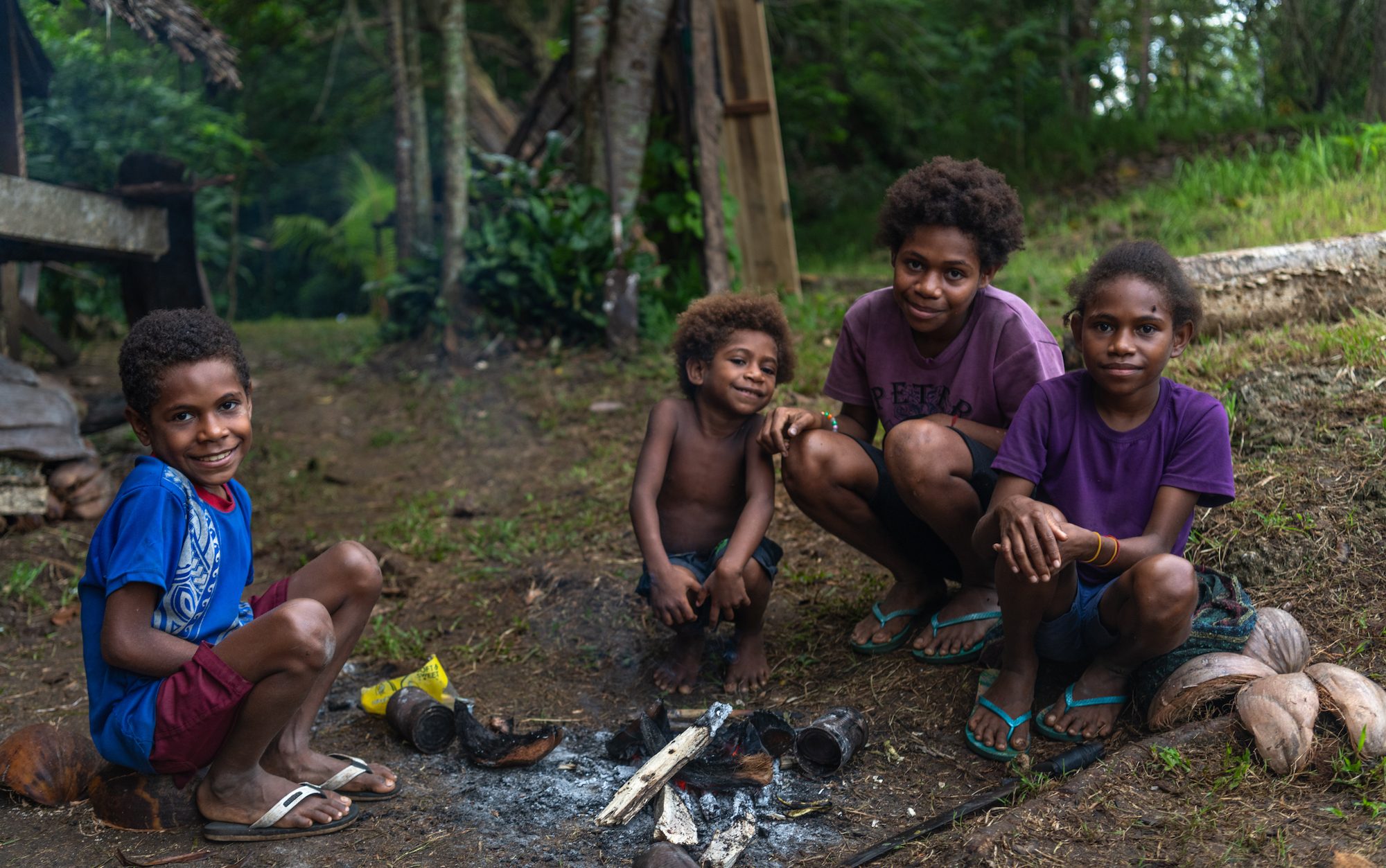
Peter, Robertha, Polista and Miminia Venantius made Ruzicka feel welcomed in Murukanam Village, she says. The children guided her from the house where she stayed to wherever she needed to go. Some would even stay near her house at night, just in case she needed help. In the morning, she would hear the village children laughing and playing until it was time to walk as a group to school.
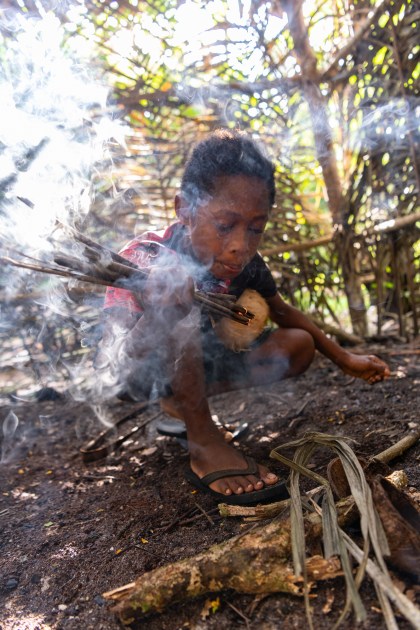
Young Edward Kaket shows off his fire-building skills in a coconut drying hut in the village of Simbukanam. Ruzicka notes that the remoteness of these villages means that they depend almost entirely on the forest for their needs: food, medicine, economy, and more.
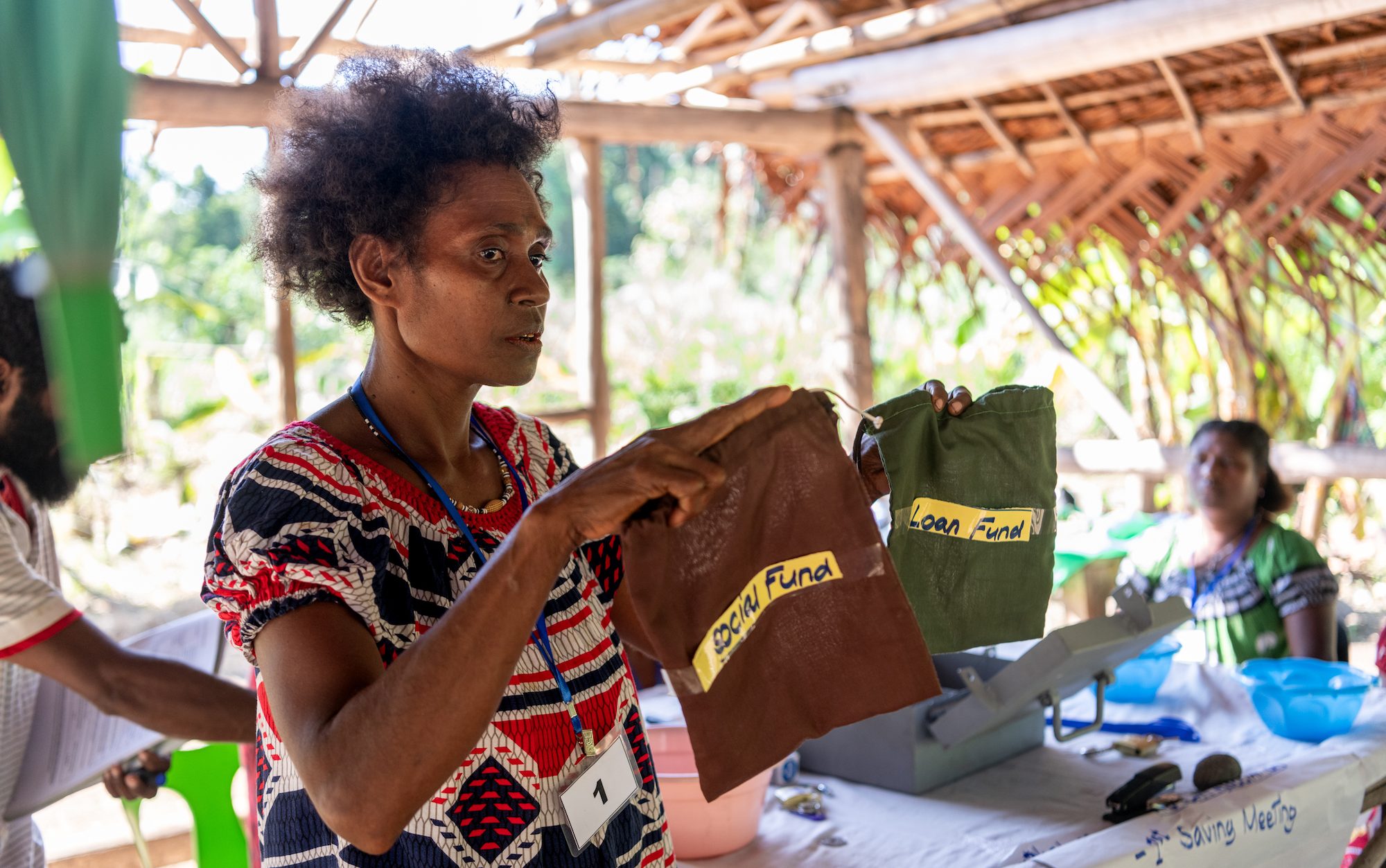
Jovita Gavam conducts a meeting with her village regarding a local savings and loan project in Kimadi Village. On this day, the women-led group was nominating people to hold different roles related to managing the funds. “It was a very formal process,” Ruzicka says. The numbered lanyards (Gavam is wearing number one here) denoted each role, such as treasurer or secretary. “And they passed the lanyards on to the next person to hold that position.”
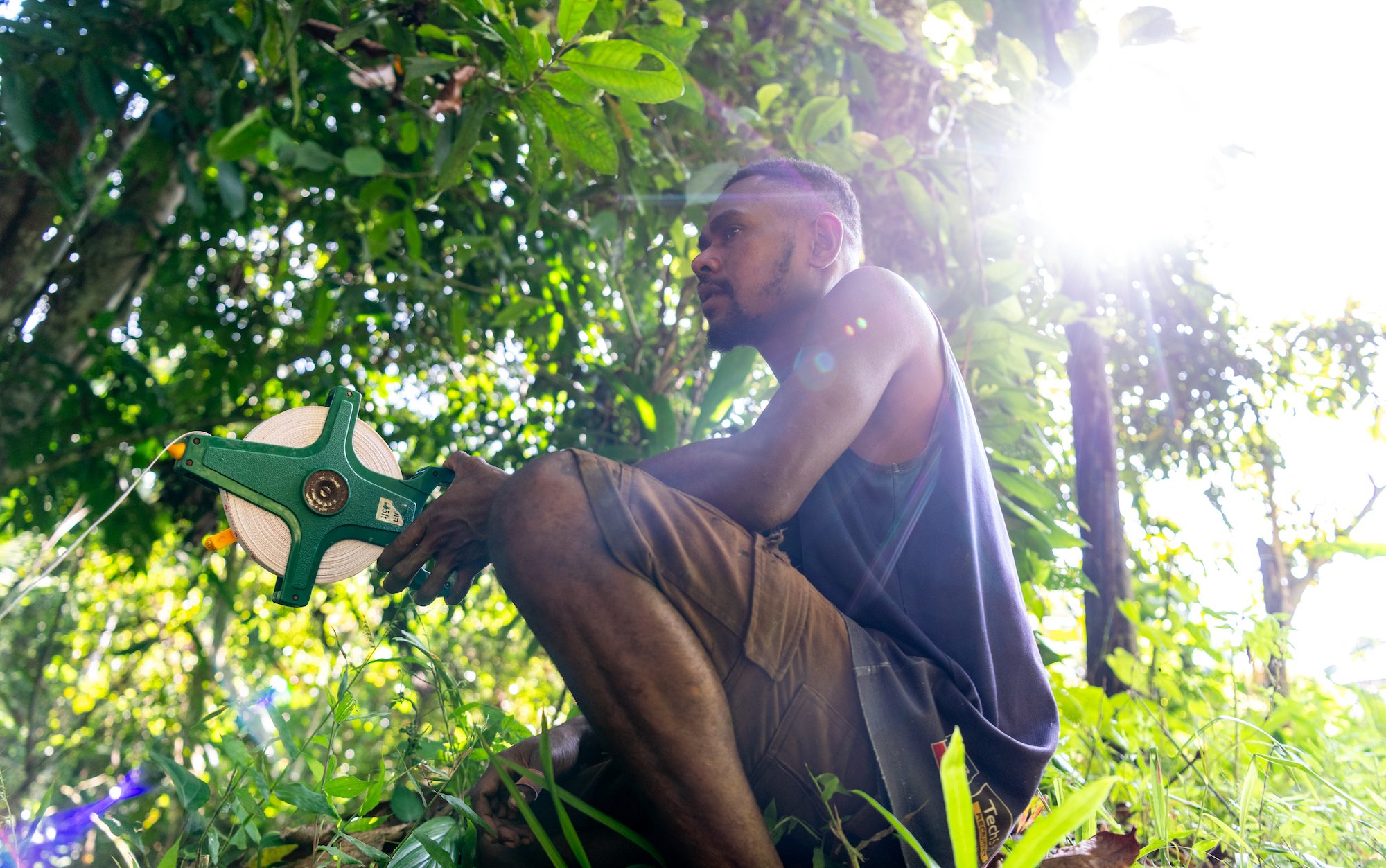
Joseph Kaket demonstrates how he and other community members run transects with a measuring tape near Simbukanam Village. Staff from The Nature Conservancy have been helping the communities record and document their forest resources as they enter into conservation agreements with each other. By running transects at the same places, communities can track and measure what is growing in their areas over time.
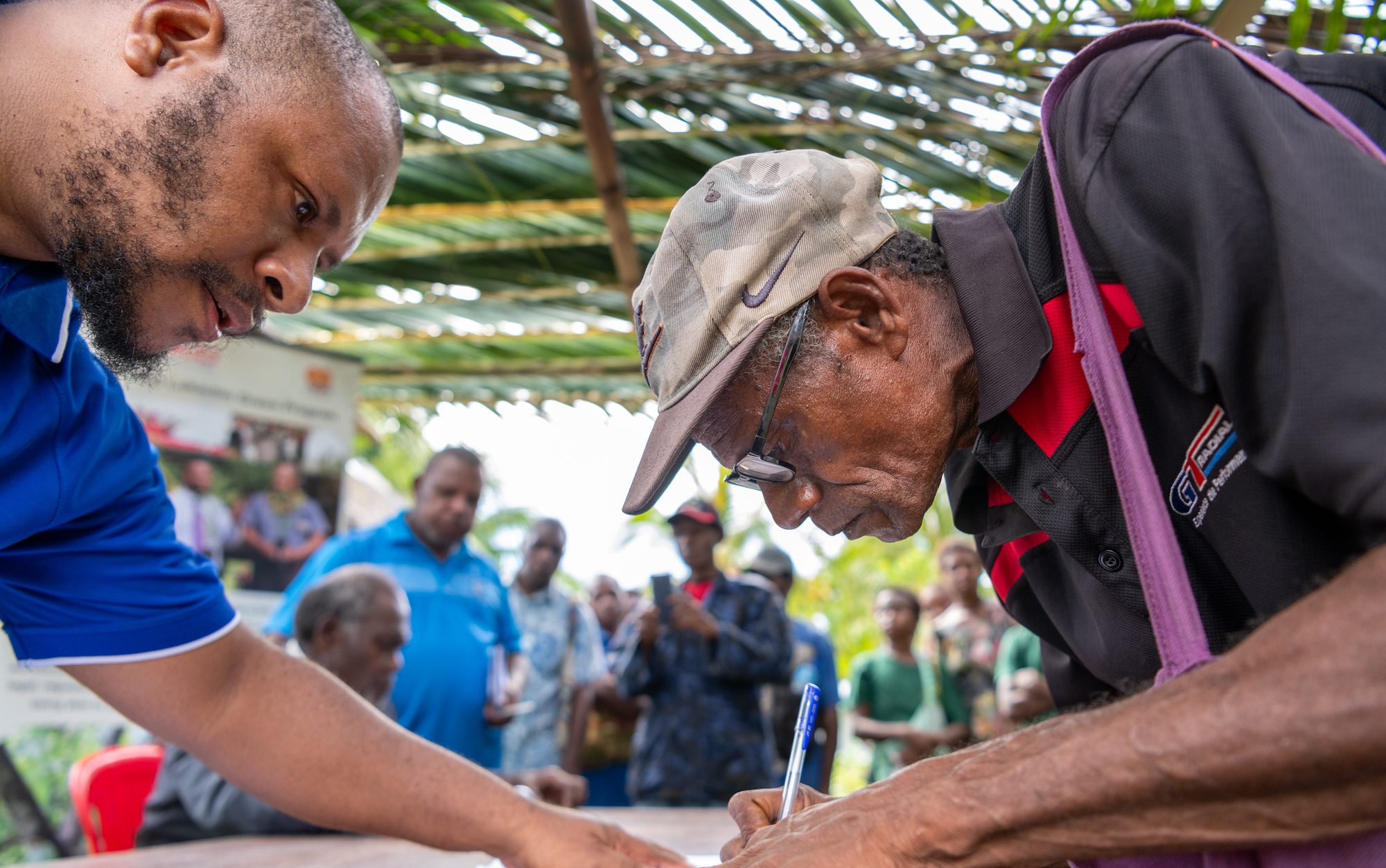
Clifford Single, a Madang-based conservation scientist for The Nature Conservancy, assists community member Mathew Lawun during the conservation deed-signing event in the Brem community. The agreement signing, which was attended by clan leaders from neighboring villages, came after many discussions among the local communities to determine how they wanted their land to be managed. “He was the one that was most concerned… He is so passionate,” says Ruzicka of Lawun. “This is a guy who would steal the keys from a logging truck” to prevent the workers from cutting trees.
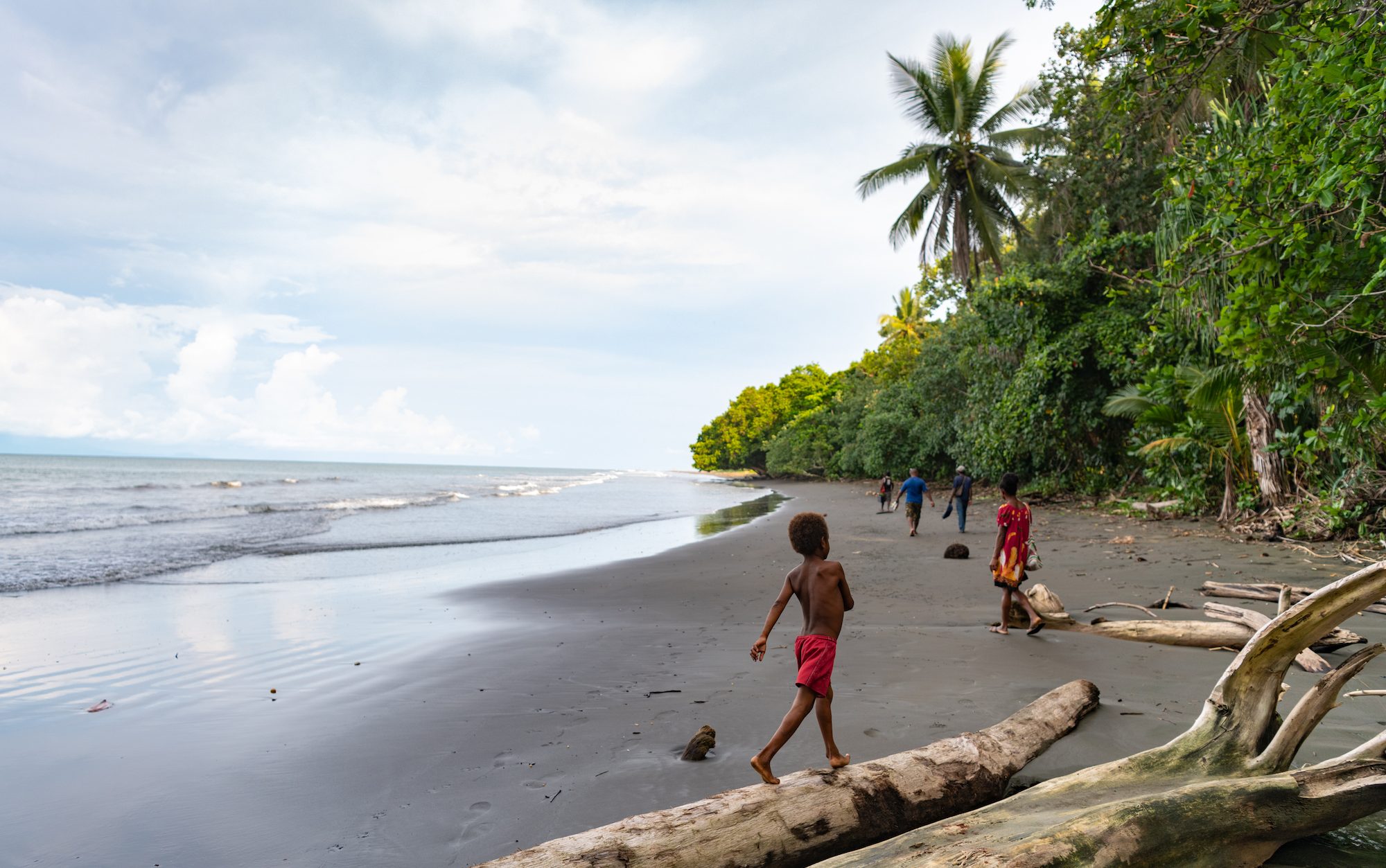
On one of her days in Madang, Ruzicka went down to the coast to join a group of residents during a beach cleanup. The group travelled about 15 minutes down the deserted beach to reach the site.
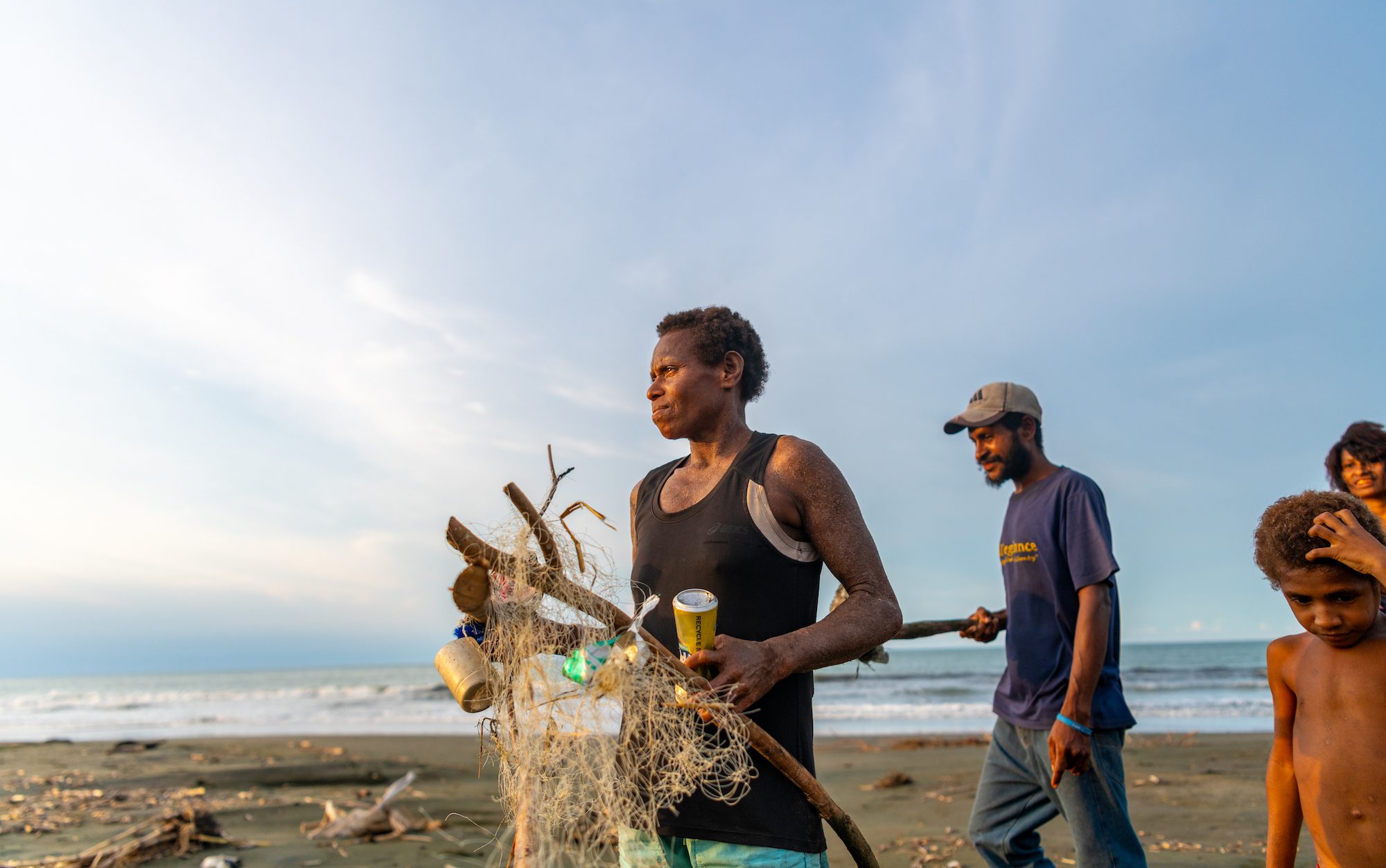
Ruzicka was astounded by the volume and variety of garbage that washes up on the local beaches. Here, Victoria Savun collects tourists’ sandals, aluminum cans and a bundle of fishing line. “This is a turtle nesting site as well,” says Ruzicka. “So any bit of debris just gets in the way of the turtles getting to where they need to go.” Likewise, this debris can ensnare turtle hatchlings as they journey from the nest to the waterline. Without a municipal or commercial service to haul the trash away, the cleanup crew carried the garbage inland and buried it—a makeshift landfill to prevent it from affecting beach wildlife.
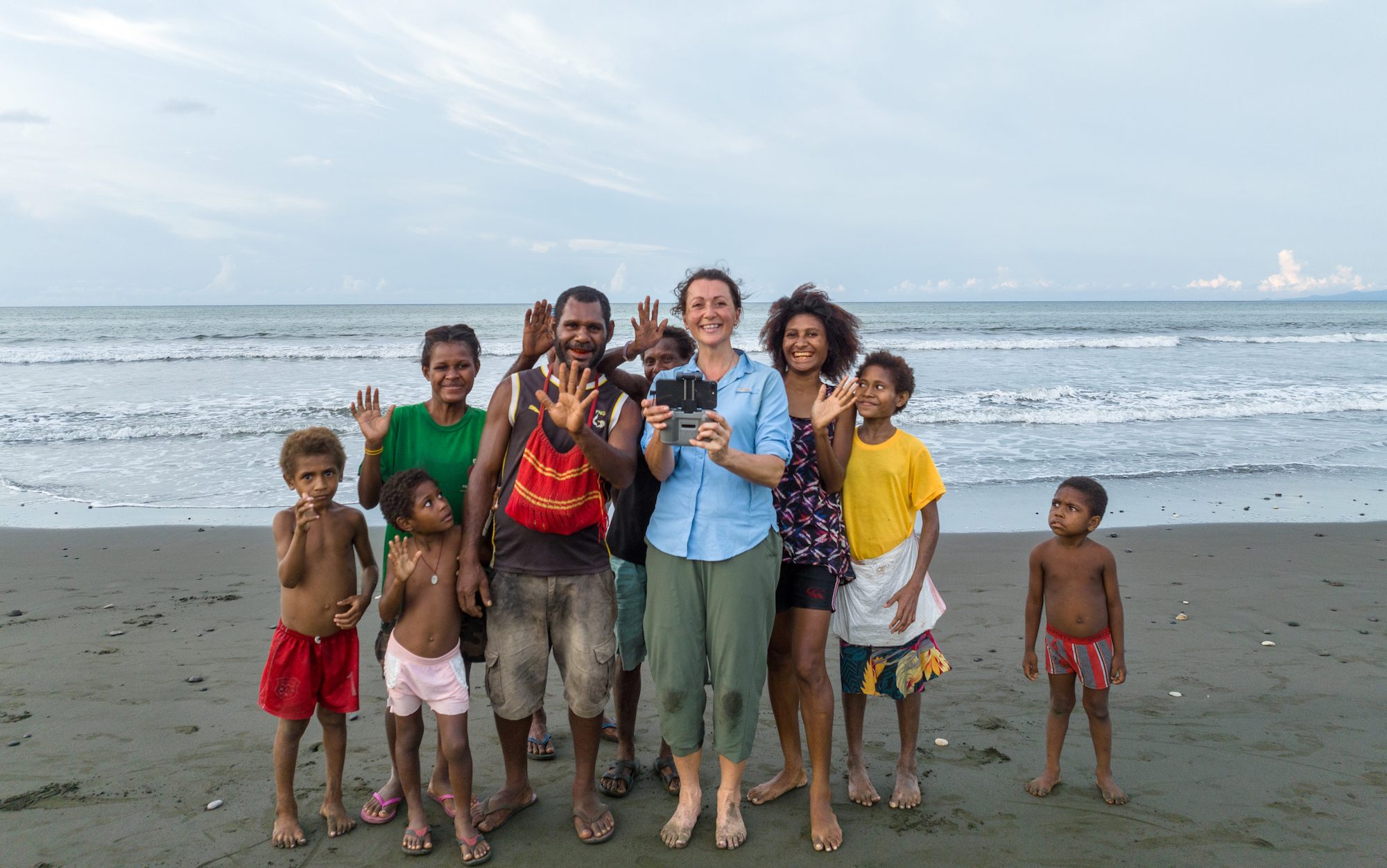
After the cleanup, Ruzicka used her camera drone to shoot a selfie with the group
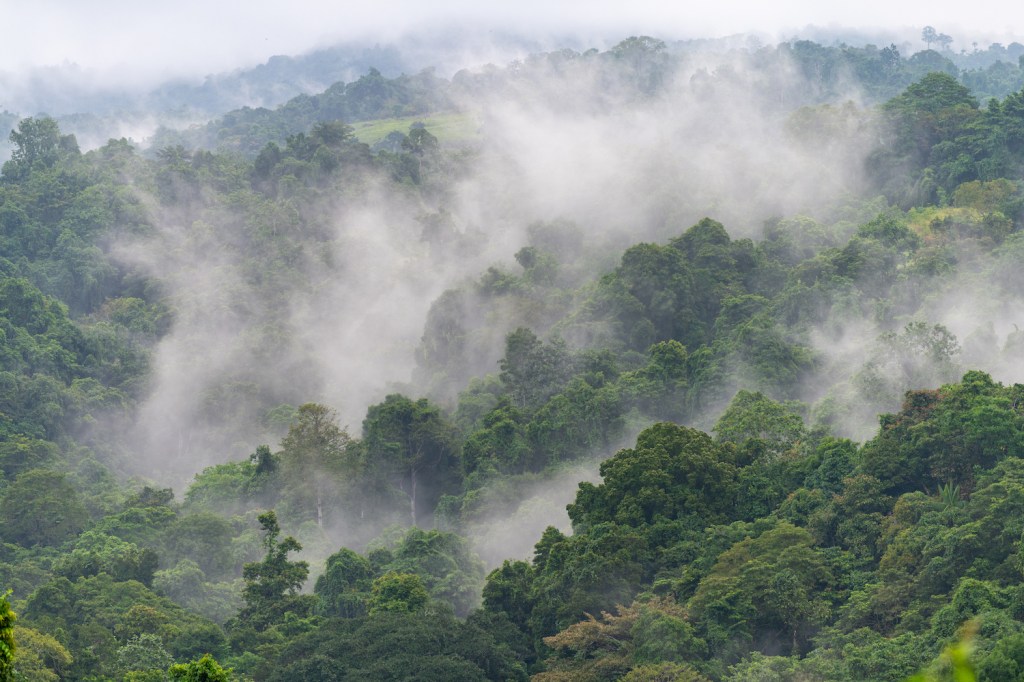



These villages & its residents deserve so much applause & praise for what they are doing to save their own environment and way of living.
Its a shame that we in the “developed” countries dont care enough to do the same.
It will take all of us to save this planet.
Great article
Maggie